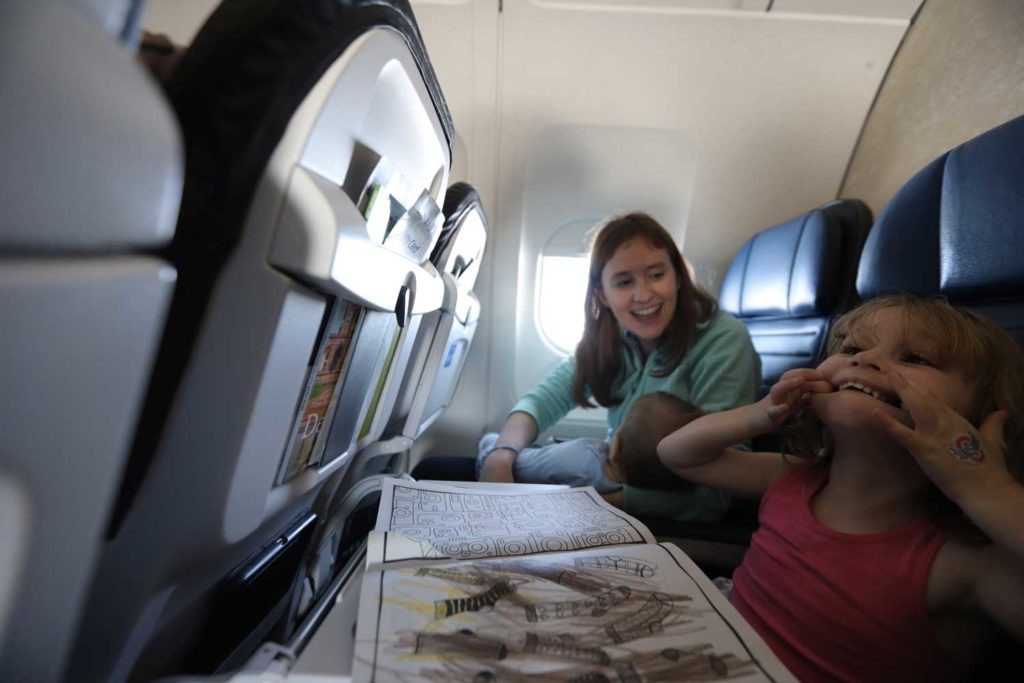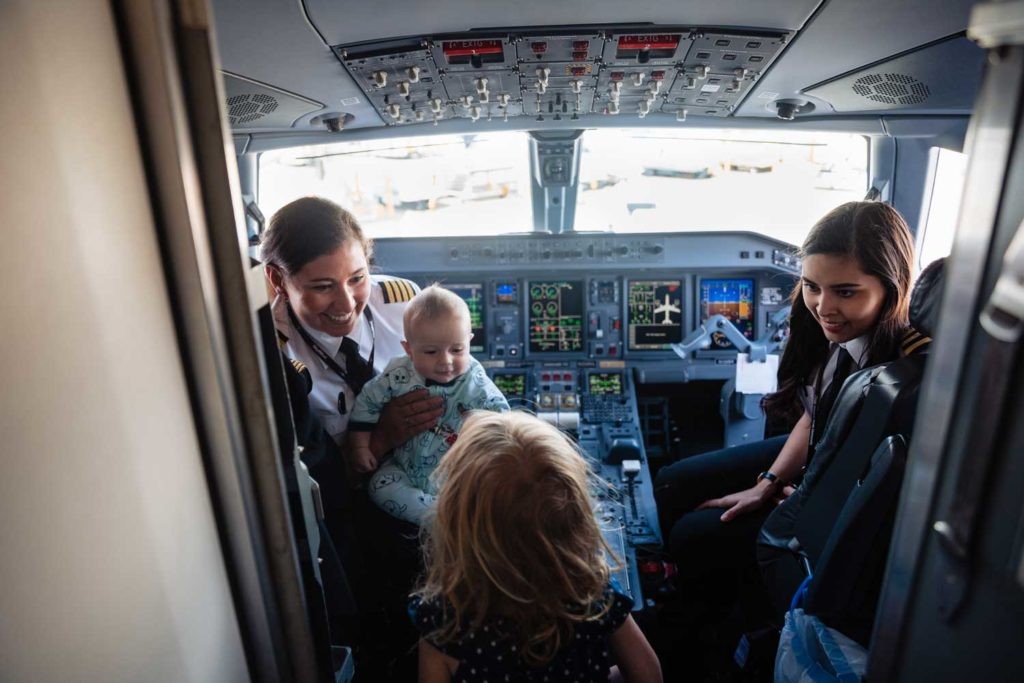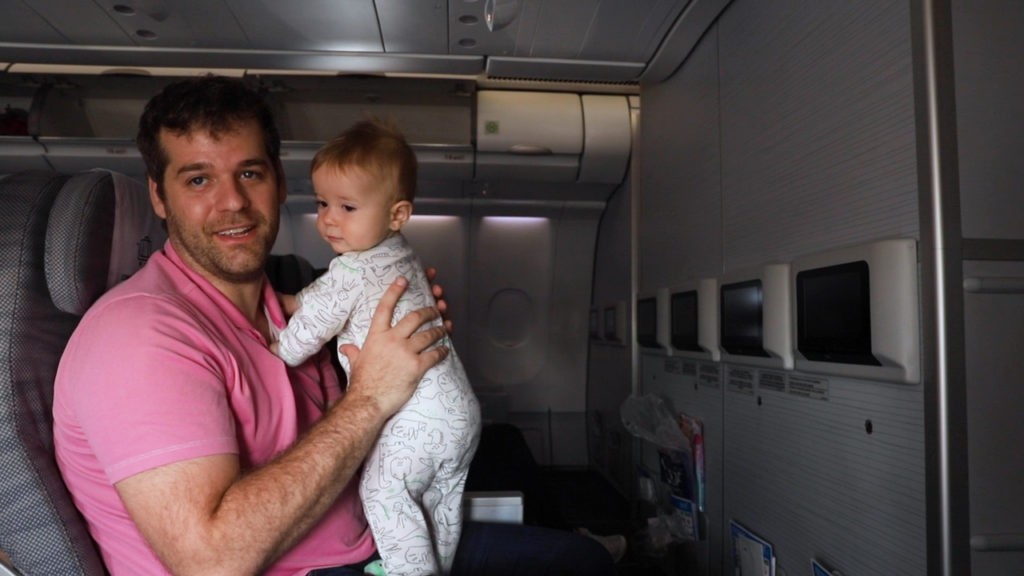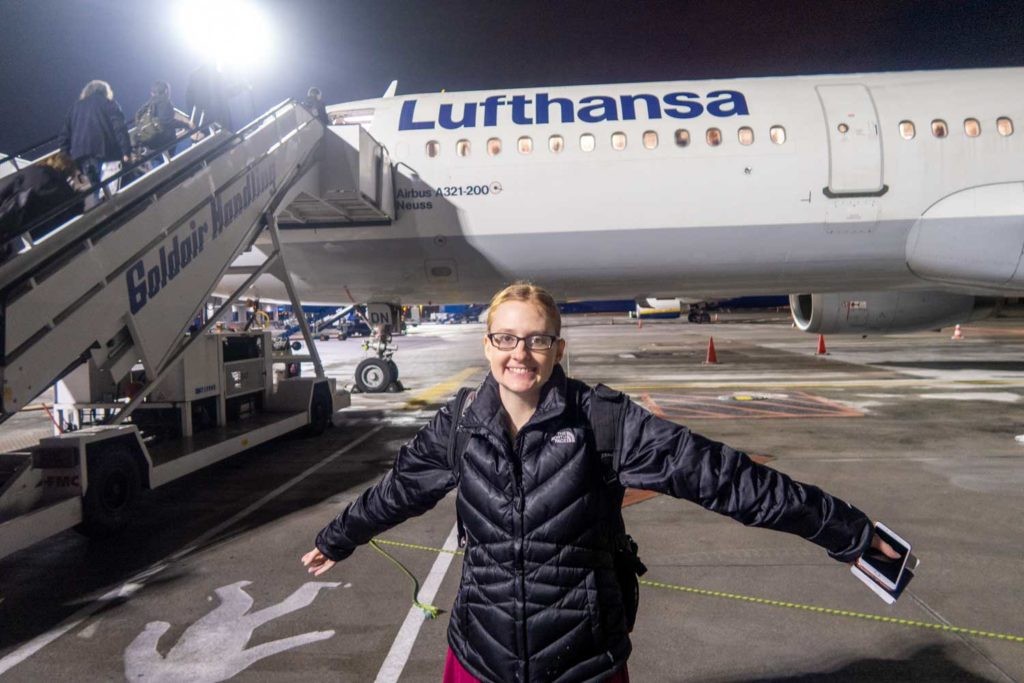If you’re new to the world of airline employment, you’ll quickly encounter the term “non-rev travel.” But What Is Non Rev Travel exactly? How does it work, and who can take advantage of it? This guide breaks down everything you need to know about this unique perk, making it easy for newbie standby travelers to understand.
Understanding Non-Rev Travel
Let’s begin with the fundamentals. What is non rev travel? “Non-rev” stands for “non-revenue,” meaning you travel on a ticket for which the airline receives little to no revenue. In many instances, the ticket could be free, with only minor taxes, mainly on international flights, to be paid. Non-rev travel is a benefit typically offered to airline employees, and the term describes how they travel.
Who is Eligible for Non-Rev Travel?
 Family at the airport during a layover, illustrating non-rev travel
Family at the airport during a layover, illustrating non-rev travel
The list of people who can benefit from non-rev travel is extensive. If you’re not an airline employee, don’t rule yourself out just yet. These travel privileges often extend to spouses or domestic partners, children (typically under 26), and parents. These individuals are often referred to as “pass riders.” Moreover, some airlines offer “buddy passes,” allowing employees to share some of their travel benefits with friends and family.
Buddy Passes Explained
Buddy passes allow friends and family to utilize employee travel privileges. Airlines typically provide employees with a specific number of buddy passes each year, which they can then distribute to close friends and relatives. It’s crucial to note that selling buddy passes or giving them to acquaintances is strictly prohibited. Buddy passes typically cost more than employee fares but offer a more affordable way for friends and family to travel.
The Catch: Flying Standby
 Mother and children on an airplane, showcasing non-rev travel
Mother and children on an airplane, showcasing non-rev travel
Flying around the world for free or at a significantly reduced cost sounds fantastic. However, non-rev travel comes with a trade-off: you fly standby. Flying standby means you only get a seat if one is available after all paying customers have boarded. These seats can become available if the flight isn’t sold out or if passengers miss their flights.
Standby travel can be unpredictable. While you may be able to access your airline’s flight loads to estimate seat availability, the actual number of available seats can change on the day of travel. Factors such as last-minute ticket sales and passengers missing flights can all influence the outcome. As a result, non-rev travel can feel like a guessing game, and it’s always a good idea to have a backup plan (or several).
International Non-Rev Travel and Flying on Other Airlines
 Kids meeting pilots after a flight, highlighting the perks of non-rev travel
Kids meeting pilots after a flight, highlighting the perks of non-rev travel
While policies can vary between airlines, international non-rev travel and flying on other airlines are generally possible.
International Flights
Flying non-revenue on international flights is similar to domestic flights, but you’ll likely have to pay international taxes. You’ll still be on the standby list and will only get a seat if one is available. Because international flights are generally larger, finding available seats is often easier. Furthermore, the taxes and fees are usually reasonable, making international travel quite affordable.
 Father and son on a long-haul flight, enjoying non-rev travel benefits
Father and son on a long-haul flight, enjoying non-rev travel benefits
Flying on Other Airlines
Reasons for flying on other airlines:
- Your airline doesn’t fly to a particular destination.
- Your airline’s flights are full on your desired travel dates.
Many airlines have agreements that extend non-rev travel privileges to each other’s employees. While the cost may be higher than flying on your own airline, it opens up many more travel options. Keep in mind that you may not have access to the flight loads for other airlines, making planning more challenging. Resources like Staff Traveler can help you find seat availability on other airlines.
 Woman boarding a Lufthansa flight, showcasing interline non-rev travel
Woman boarding a Lufthansa flight, showcasing interline non-rev travel
The Non-Rev Process: How it Works
Now that you know what is non rev travel, let’s explore how it works in practice.
- Listing for the Flight: You’ll use an employee system to list yourself on the standby list for your desired flight. Pass riders can often access this system as well.
- Standby Ticket: You’ll receive a standby ticket to pass through airport security.
- Airport Arrival: Arrive at the airport as you would for any other flight.
- Waiting for Your Name to Be Called: Hope that the gate agent calls your name!
Many factors influence standby success, and they can vary significantly between airlines. Typically, a prioritized list of non-rev travelers is created based on factors such as employee tenure, whether you’re traveling with the employee, and your buddy pass status. Some airlines prioritize based on when you listed for the flight. Additionally, some airlines have dress codes for non-rev travelers.
Non-Rev Travel: An Adventure
While non-rev travel can have its challenges, it’s also an adventure filled with unique experiences. Whether you’re lounging in first class or spending the night at the airport, non-rev travel creates memories and stories you won’t soon forget.
